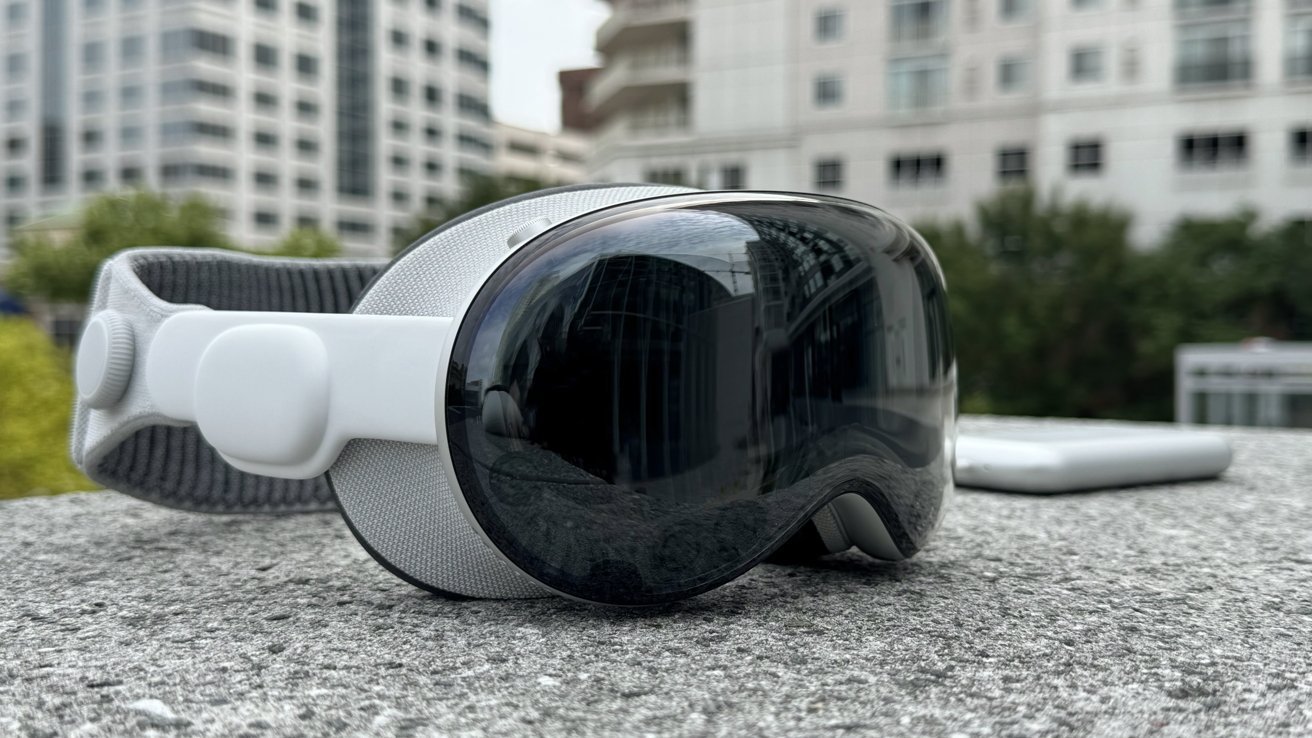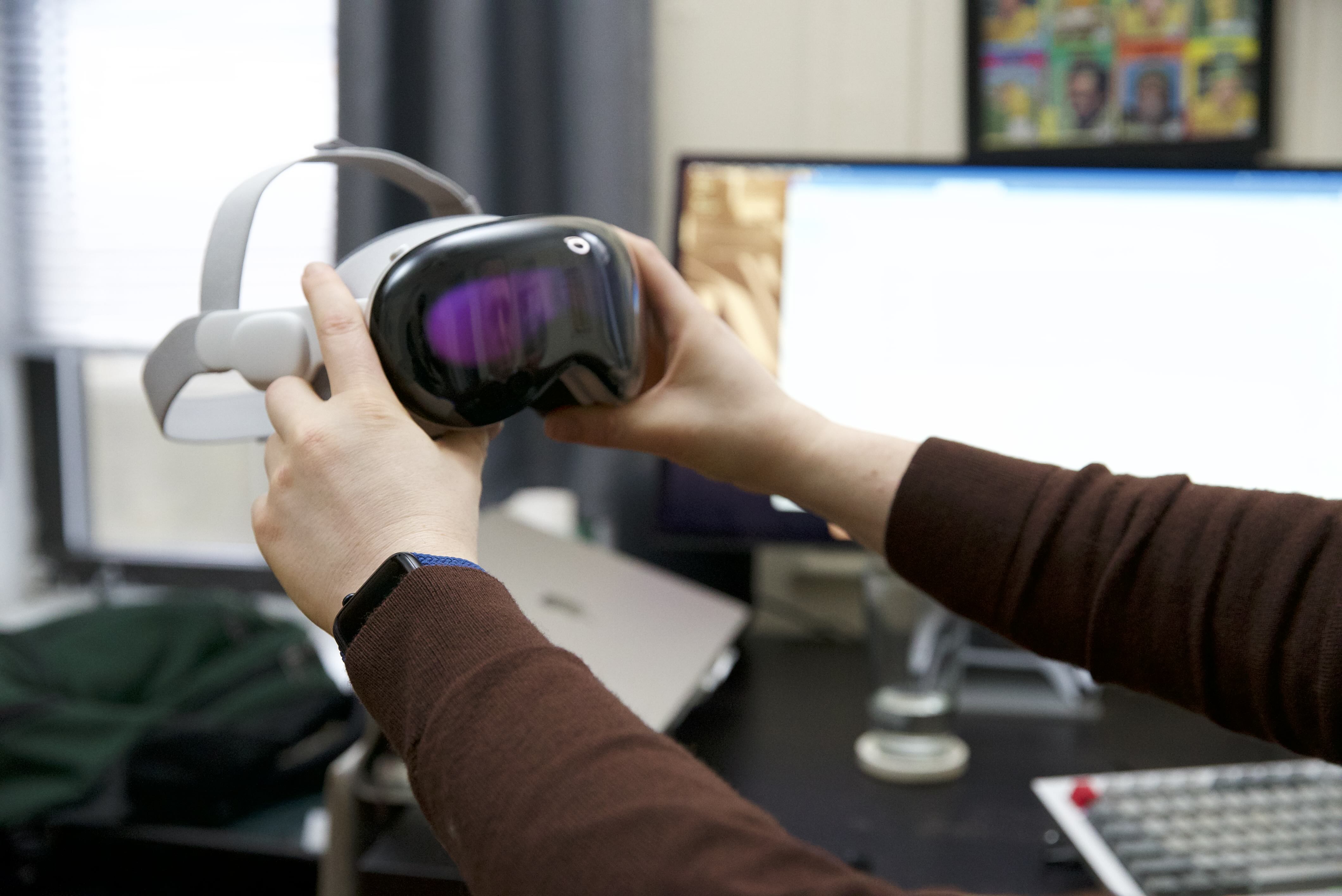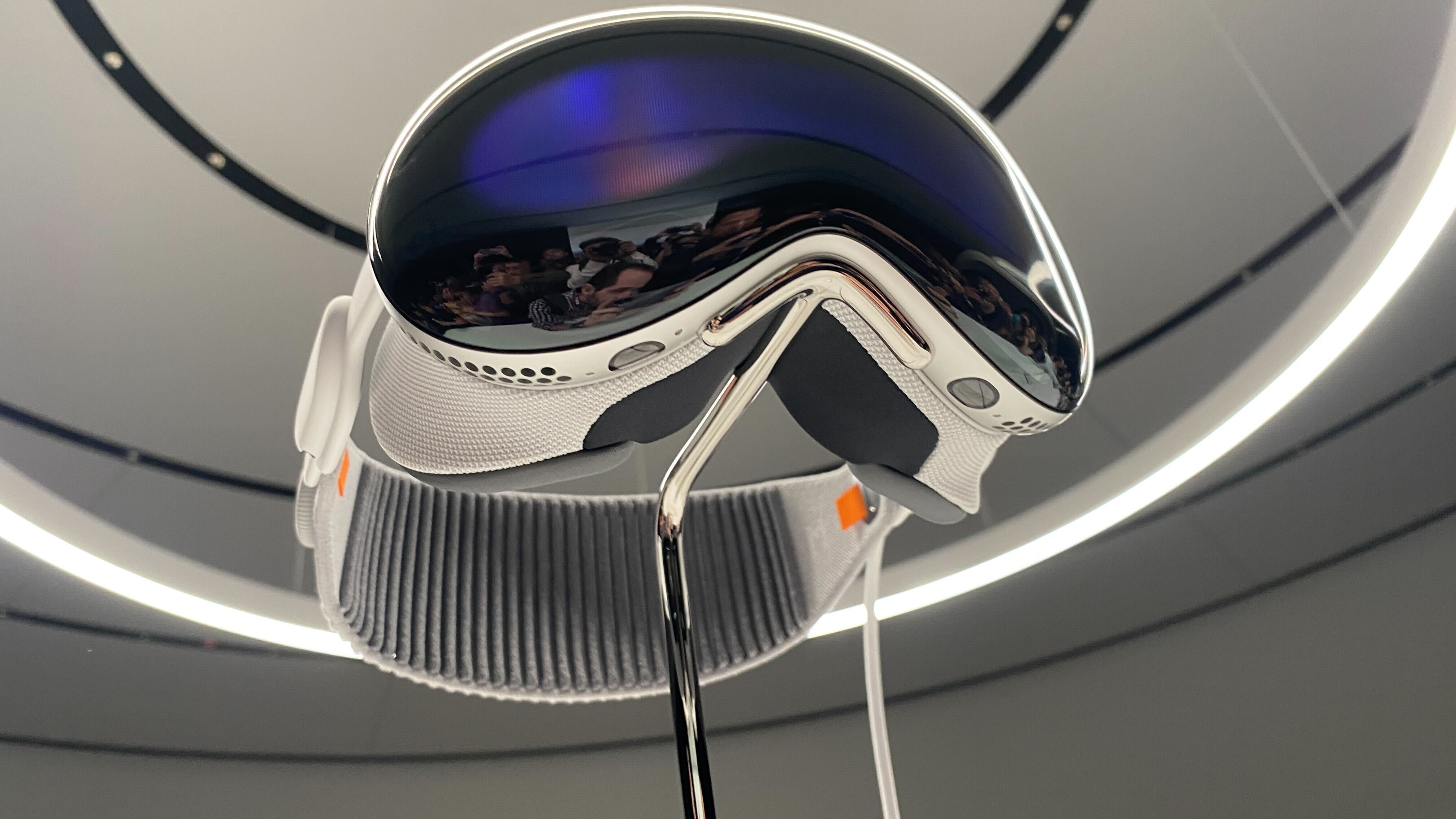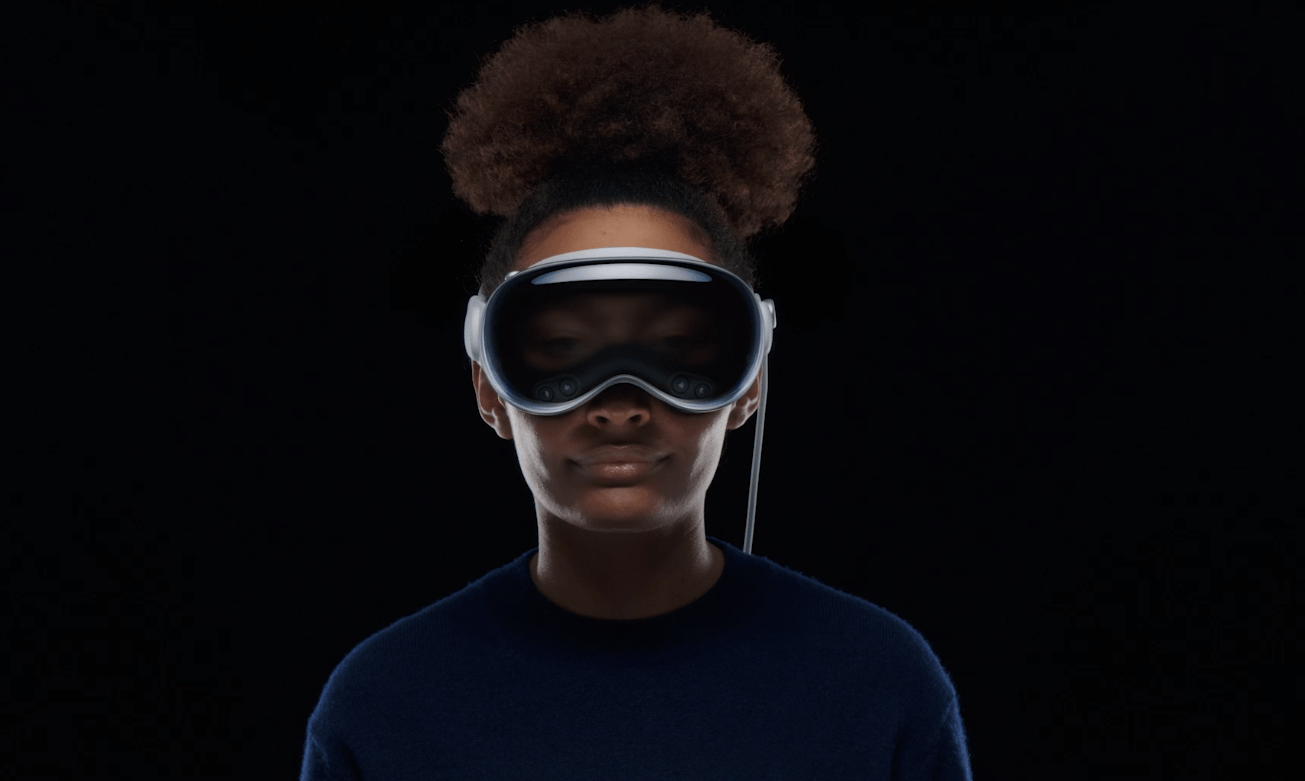Apple Vision Pro Production Cuts Amidst Declining Sales: A Commercial Deep Dive
Estimated reading time: 8 minutes
Key Takeaways
- The initial excitement for the Apple Vision Pro technology has been met with significant commercial challenges, including Apple Vision Pro production cuts.
- Early Apple Vision Pro sales forecasts significantly overestimated actual demand, leading to an inventory overhang.
- High Apple Vision Pro return rates are attributed to factors like the prohibitive price, physical discomfort, and a lack of compelling use cases.
- Production adjustments suggest Apple is re-evaluating its strategy for spatial computing hardware.
- The future of the Vision Pro line may involve a more affordable model and a greater focus on lighter AR devices.
Table of Contents
- Apple Vision Pro Production Cuts Amidst Declining Sales: A Commercial Deep Dive
- Key Takeaways
- The Dawn of Spatial Computing: Apple Vision Pro Technology
- Initial Demand Surge and Early Adopter Enthusiasm
- The Reality Check: Apple Vision Pro Sales Forecasts vs. Actuals
- The Return Rate Conundrum: Why Are Users Returning Vision Pros?
- The Fallout: Apple Vision Pro Production Cuts Explained
- Global Ambitions: The Apple Vision Pro Europe Launch Outlook
- Key Factors Influencing Apple Vision Pro’s Commercial Trajectory
- The Road Ahead: Future Strategies and Product Evolution
- Frequently Asked Questions
The Dawn of Spatial Computing: Apple Vision Pro Technology
The unveiling of the Apple Vision Pro technology marked a pivotal moment, heralded as the dawn of a new era in personal computing: spatial computing. This innovative device promised to seamlessly blend digital content with the physical world, offering an experience unlike any before. At its core, the Vision Pro boasts:
- *High-resolution micro-OLED displays:* These screens deliver an astonishing visual fidelity, rendering digital elements with incredible sharpness and detail, creating a truly immersive experience.
- *Advanced eye-tracking and hand-tracking capabilities:* This allows for intuitive, gesture-based control. Users can navigate interfaces, select items, and interact with digital content simply by looking at it and using natural hand movements, eliminating the need for traditional controllers.
- *The concept of “spatial computing”:* Apple’s vision is to create a computing platform where digital information and applications exist and interact within the user’s physical space, offering new ways to work, play, and connect.
- *Dual-chip architecture:* Powering this experience are Apple’s M2 and R1 chips, providing the immense processing power required for real-time rendering, sensor data processing, and complex computations.
This sophisticated Apple Vision Pro technology was the foundation for the immense early interest and anticipation surrounding the device.

Initial Demand Surge and Early Adopter Enthusiasm
Following its announcement and subsequent launch, the Apple Vision Pro experienced an initial surge in Apple Vision Pro demand. This was largely driven by a core group of early adopters, including tech enthusiasts, developers eager to explore its capabilities, and loyal Apple customers keen to be at the forefront of the company’s next major innovation. The extensive media coverage and initial positive impressions, often focusing on the groundbreaking nature of the technology, further fueled this excitement.
The narrative surrounding the Vision Pro was one of revolutionary potential, positioning it as a glimpse into the future of computing. This narrative, coupled with Apple’s strong brand loyalty, contributed to a perception of high initial demand and robust early sales figures.

The Reality Check: Apple Vision Pro Sales Forecasts vs. Actuals
However, the initial euphoria soon began to give way to a more sobering commercial reality. The Apple Vision Pro sales forecasts, which had been highly optimistic, started to look increasingly out of touch with market performance. Projections often suggested significant unit sales, with some estimates pointing towards 400,000 to 450,000 units sold in the first year. This initial optimism was a key driver of manufacturing plans and market expectations.
More recent industry tracker estimates paint a different picture. Reports indicate that sales may have only reached around 370,000 units by the third quarter, with potentially only an additional 50,000 units sold by the end of the year. These figures, when compared to initial projections, highlight a significant shortfall. The consequence of this lower-than-expected Apple Vision Pro demand is a considerable inventory overhang, indicating that Apple produced more units than the market was ready to absorb at the current price point and offering.
The stark contrast between initial sales forecasts and the actual market performance has led to significant adjustments in Apple’s strategy, most notably in production.

The Return Rate Conundrum: Why Are Users Returning Vision Pros?
Adding to the commercial challenges are the reported high Apple Vision Pro return rates. While specific numbers are not publicly disclosed by Apple, anecdotal evidence and industry analysis suggest a significant portion of initial purchases are being returned. The reasons behind these returns are multifaceted and reveal critical friction points for widespread adoption:
- Prohibitive Price Point: The starting price of $3,499 is a monumental barrier for most consumers. This cost positions the Vision Pro as a luxury item rather than an accessible computing device for the masses. The high price naturally limits the addressable market.
- Physical Discomfort: Many users report issues related to the weight of the device and the resulting discomfort during extended wear. Fatigue and pressure points are common complaints, detracting from the immersive experience. User feedback frequently highlights these ergonomic challenges.
- Limited Compelling Use Cases: Beyond the initial novelty and specific professional applications, many users struggle to find “must-have” use cases that justify the steep price and effort of integration into their daily lives. The lack of a killer app or widespread daily utility is a significant deterrent.
- Software Ecosystem Immaturity: While growing, the number of dedicated third-party applications specifically designed for the Vision Pro is still relatively small. This limits the device’s versatility and appeal.
- Integration Challenges: For many, the Vision Pro doesn’t seamlessly fit into their existing routines. The experience can feel isolating or cumbersome compared to traditional computing or even mobile devices.
These factors collectively contribute to suppressed demand and can lead to negative word-of-mouth, further impacting sales and driving up return rates. User sentiment is a critical indicator here.

The Fallout: Apple Vision Pro Production Cuts Explained
The culmination of declining sales and high return rates has led to significant Apple Vision Pro production cuts. Reports indicate that Apple has substantially reduced, and in some cases, even paused manufacturing of the first-generation Vision Pro. Suppliers have reportedly been informed of these slowdowns, with some suggesting a potential cessation of production for the current model. This strategic shift signifies Apple’s acknowledgement of the current market realities. The dramatic cuts signal a clear departure from the initial ambitious production targets.
These production adjustments are not merely a response to temporary market fluctuations; they represent a strategic re-evaluation. They indicate Apple’s recognition that the current iteration of the Vision Pro, while technologically advanced, faces significant hurdles to mass-market adoption. This situation is likely prompting Apple to pivot, potentially by focusing resources on developing more affordable mixed-reality hardware. The development of a cheaper model is widely anticipated.
The uncertainty surrounding the future of the Vision Pro line itself is palpable. These production decisions raise questions about Apple’s long-term commitment to this specific product category and its overall spatial computing strategy.

Global Ambitions: The Apple Vision Pro Europe Launch Outlook
The planned Apple Vision Pro Europe launch arrives at a complex juncture, following the difficult market reception in the United States. Expectations for the European market are naturally tempered by the U.S. experience. It is highly probable that similar factors – namely the prohibitive price point, concerns about physical comfort, and the need for more compelling use cases – will heavily influence demand across European countries.
The economic conditions in various European markets, coupled with differing consumer priorities and technological adoption rates, could further complicate the launch. While some tech-savvy segments of the European population may embrace the Vision Pro, it is unlikely to achieve broad appeal without significant price adjustments or a compelling evolution of its software and hardware. The global rollout will be closely watched.
Crucially, the ongoing production cuts might directly impact the scale or even the precise timing of the European rollout. This could indicate a more cautious, phased approach, with Apple perhaps limiting initial availability to gauge market response before committing to wider distribution. The company may be using the European launch to gather further data before committing to larger production runs for subsequent generations.

Key Factors Influencing Apple Vision Pro’s Commercial Trajectory
The commercial trajectory of the Apple Vision Pro is being shaped by a confluence of interconnected factors. A critical synthesis of these elements provides a clearer picture of its current market position and future potential:
- The High Price Point: This remains the most significant barrier, immediately alienating a vast majority of potential consumers. It confines the device to a very niche market.
- Niche Market Appeal: Currently, the Vision Pro resonates most strongly with early adopters, developers, and professionals in very specific fields. Broadening this appeal is a significant challenge.
- The App Ecosystem: The success and utility of any new computing platform are heavily reliant on its software. A robust and diverse app ecosystem is crucial for driving adoption and providing ongoing value.
- User Comfort and Ergonomics: Ongoing concerns about the weight and comfort of the device for extended periods directly impact user experience and long-term usability.
- Competition: While the Vision Pro offers a unique approach, the market for VR and AR headsets is evolving, with more accessible and established competitors offering different value propositions.
- Technological Evolution: The rapid pace of innovation in the AR/VR space means that even cutting-edge technology can quickly become outdated. Apple must balance introducing new tech with ensuring its longevity and market relevance.
Understanding these dynamics is key to interpreting Apple’s current strategies and future product development for spatial computing.

The Road Ahead: Future Strategies and Product Evolution
Based on the current market reception and the significant production adjustments, Apple’s strategic path forward for its spatial computing ambitions appears to be evolving. Several key avenues are likely to be explored:
- Development of a Cheaper Model: The most frequently discussed strategy is the anticipated release of a more affordable Vision Pro variant, sometimes referred to as “Vision Air.” This move, potentially arriving in 2025 or 2026, aims to broaden market appeal significantly by making spatial computing accessible to a much larger segment of consumers. Such a product would need to balance cost reduction with maintaining a compelling user experience.
- Focus on Next-Generation AR: There’s a possibility that Apple may be prioritizing the development of lighter, more discreet AR smart glasses as the long-term future of mainstream spatial computing. This direction could represent a more practical and less intrusive approach to blending digital and physical realities for everyday use.
- Iterative Updates to Vision Pro Technology: If a lower-cost model takes precedence, future iterations of the flagship Vision Pro might focus on refined Apple Vision Pro technology with incremental improvements rather than radical overhauls. This approach would allow Apple to learn from the first generation while dedicating resources to broader market accessibility.
The company’s response to the current commercial realities will dictate the pace and direction of its spatial computing ambitions.

Frequently Asked Questions
What are the main reasons for Apple Vision Pro production cuts?
The primary reasons are significantly lower-than-expected sales and high return rates. Consumer adoption has not met initial forecasts, leading to an oversupply of devices and prompting Apple to reduce manufacturing.
Why are users returning the Apple Vision Pro?
Key reasons include its extremely high price point, physical discomfort from extended wear (due to weight), a lack of universally compelling “must-have” applications, and an immature software ecosystem.

Will Apple release a cheaper Vision Pro model?
There are strong indications and reports suggesting that Apple is working on a more affordable version of the Vision Pro, potentially for release in 2025 or 2026, aimed at capturing a broader market.
What is the outlook for the Apple Vision Pro Europe launch?
The European launch is expected to face similar challenges to the U.S. market, primarily due to price and the need for compelling use cases. Production cuts might influence the scale and timing of the rollout, suggesting a more cautious approach.
)
Is the Apple Vision Pro a commercial failure?
While the first-generation Vision Pro has faced significant commercial headwinds and production cuts, it’s premature to label it a complete failure. It can be seen as a pioneering, albeit expensive, first step into spatial computing for Apple. The company’s long-term strategy will likely involve iterations and more accessible models.
What does “spatial computing” mean in the context of Apple Vision Pro?
Spatial computing refers to a new computing paradigm where digital content and applications are integrated into and interact with the user’s physical environment. The Apple Vision Pro uses advanced sensors and displays to create this blended reality experience, allowing users to interact with digital elements as if they were physically present.







